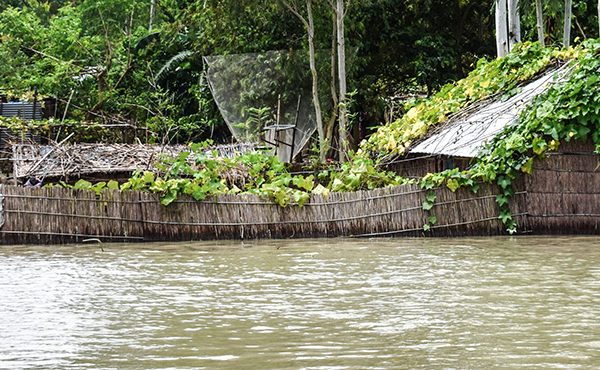Inside Cox’s Bazar’s settlements where childhood and laughter still exist
Reading Time: 2 minutes
Almost each day these days, I wake up and make my way to the makeshift camps in Ukhiya and Teknaf in Cox’s Bazar, the site of the world’s biggest humanitarian crisis of recent times. Life in these settlements is brutal- I see the struggles of the women, men and children who have recently arrived, most exhausted and traumatised.
It’s a life of uncertainty, and a life inside a jail. Movement is strictly regulated and there is no assurance of a regular food supply. Basic services like water, sanitation and health are in place but the needs are far greater.
Within all these odds, however, I also catch glimpses of smiles as children play in whatever open spaces available, running around the endless maze of shanties or making toys out of mud.
Yesterday I was in the camp once again, this time to select sites for fecal sludge management in the settlements of Hakimpara in Ukhia. The rows of makeshift tents gave way to a large clearing where I saw around 20 children gathered outside a newly constructed bamboo shed. They had bright smiles, and appeared to be anticipating something.

I was curious to know the reason, and soon found that I was standing in front of a shishu kendra, one of BRAC’s 200 child-friendly spaces. A new shift was about to begin. I asked a boy of about eight years old why he was there, and he told me that he loved coming to this place every day. Inside the walls are bursting with colourful artwork and the cool, mud floors covered with bright mats and toys. It is evident that the space is more than just a room for them.
Here was a space that offered these children with some respite, even for just a few precious hours. They were allowed to forget their overcrowded, temporary homes, and the unimaginable situations they have escaped. They make friends, sing and play just like they did before they left their homes. The young women facilitators engage the children in play therapy, art therapy and storytelling. They keep an eye out for aggressive behaviour, listen to their problems, and sometimes scold the mischievous ones, but they also love them like their older sisters.

I have worked for many humanitarian missions in the last 17 years- from earthquake-hit regions to villages affected by cyclones and the Tsunami, to countries where refugees were caught in conflict. Rarely, however, have I seen such a lively and accessible approach of extending psychosocial care to heavily traumatised children.
A girl tells me that she can have as much water as she liked from one of BRAC’s tube well installed just few metres away from the shishu kendra. She could also go to the toilets nearby without feeling scared. Some children share that they can avoid the scorching heat in their homes as the breeze flows in through the open windows, keeping the centre cool and airy.
In that brief moment, I too could forget the scenes of distress I saw outside. There was laughter and energy everywhere. I saw the impact of the hand pumps and water points, bathing spaces, sanitation facilities, health centres and these child-friendly spaces, and I felt humbled to be a part of an organisation that is extending life-saving services around the clock, trying to make the lives of children, women and men in these settlements a little better every day. The visit rejuvenated me as I returned to my accommodation, motivating me to keep up the promise of more smiles and laughter.
Shashanka Saadi is the head of emergency response programme at BRAC International.





